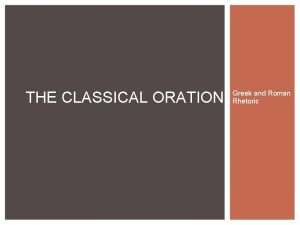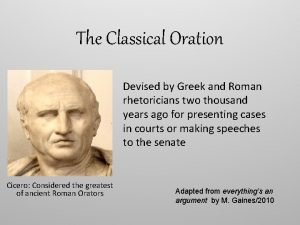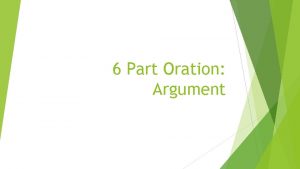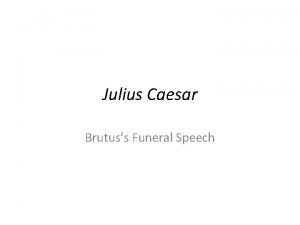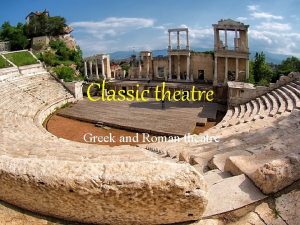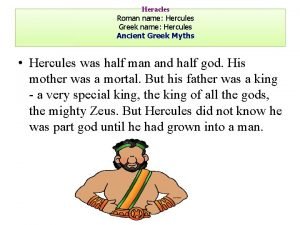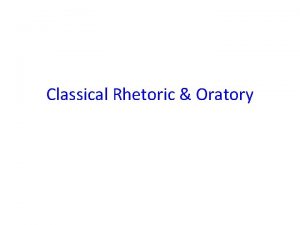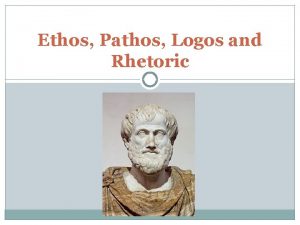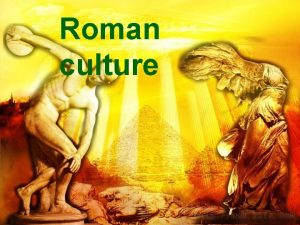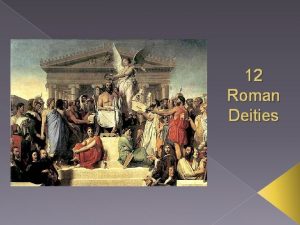THE CLASSICAL ORATION Greek and Roman Rhetoric Classical










- Slides: 10

THE CLASSICAL ORATION Greek and Roman Rhetoric

Classical Argument - The History • One of the oldest known forms for making an argument (Greeks, 5 th century BC) • Incorporates the five parts of a discourse that ancient teachers of rhetoric believed were necessary for persuasion, especially when the audience included a mixture of reactions from favorable to hostile. • They often prescribed this order to students, not because it was absolutely ideal, but because using the scheme encouraged the writer to take account of some of the most important elements of composing • Does not guarantee a perfect argument, but can help give your paper structure and make sure you’ve covered your bases. • Mostly useful when addressing NEUTRAL or UNDECIDED audiences.

• refutatio

MODERN INTERPRETATION Classical Rhetoric

THE MODERN VERSION Now, knowing the Latin terms is awesome, but they are mostly there to assure you that these forms are time-tested ancient. Here are the contemporary equivalents (you know them well) Introduction § Exordium § Narratio § Propositio Presentation of Writer’s Position (doesn’t have to come first) § Confirmatio Summary and Critique of Alternate Viewpoints § Refutatio Conclusion § Peroratio

MODERN PRESENTATION OF ARGUMENT • Introduction (Exordium) o Gains readers’ interest and willingness to listen. o This is your “grabber” and where you can establish a relationship with the audience.

MODERN PRESENTATION OF ARGUMENT • Background (Narratio) • Narrates the key facts and/or events leading up to your case • Includes the historical background: the who, what, where, etc. • Establishes your understanding of the issue • Thesis (Propisitio) o States your side of the argument o Lays out your claim (thesis)

MODERN PRESENTATION OF ARGUMENT Body (Confirmatio) • Present your argument point by point • Provide evidence to support your claim (thesis) • This is the MEAT of your argument.

MODERN PRESENTATION OF ARGUMENT • Counter Argument o Examines alternative points of view and opposing arguments. o Notes the advantages and disadvantages of these views. o Explains why your view is better than others.

MODERN PRESENTATION OF ARGUMENT • Conclusion (Peroratio) o Elaborates on the implications of your claim. o Makes clear what you want the audience to think or do – Call to action o Reinforces your credibility and perhaps offers an emotional appeal.
